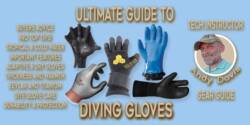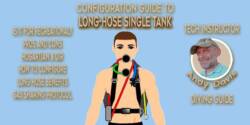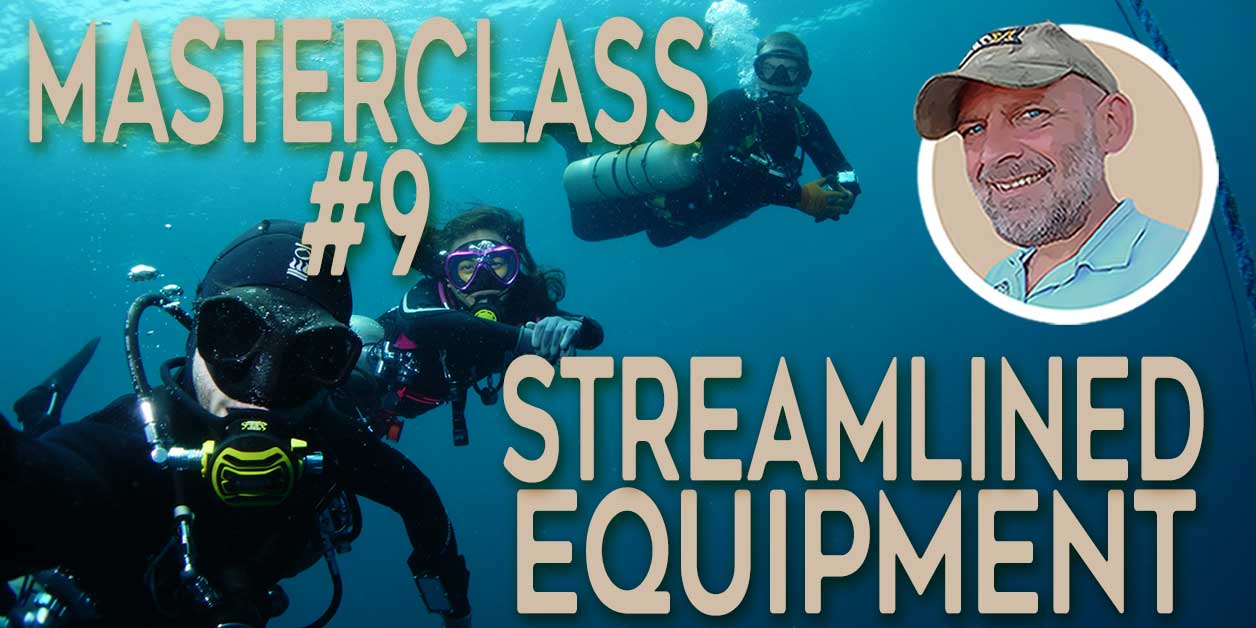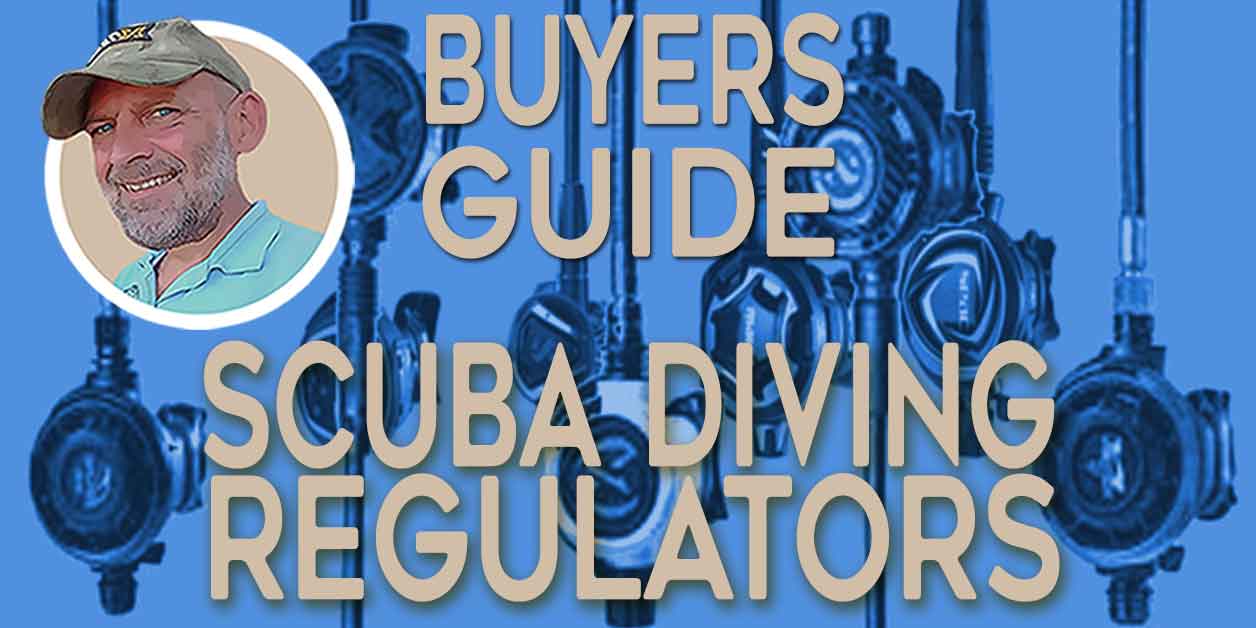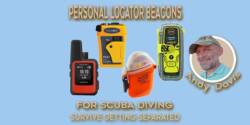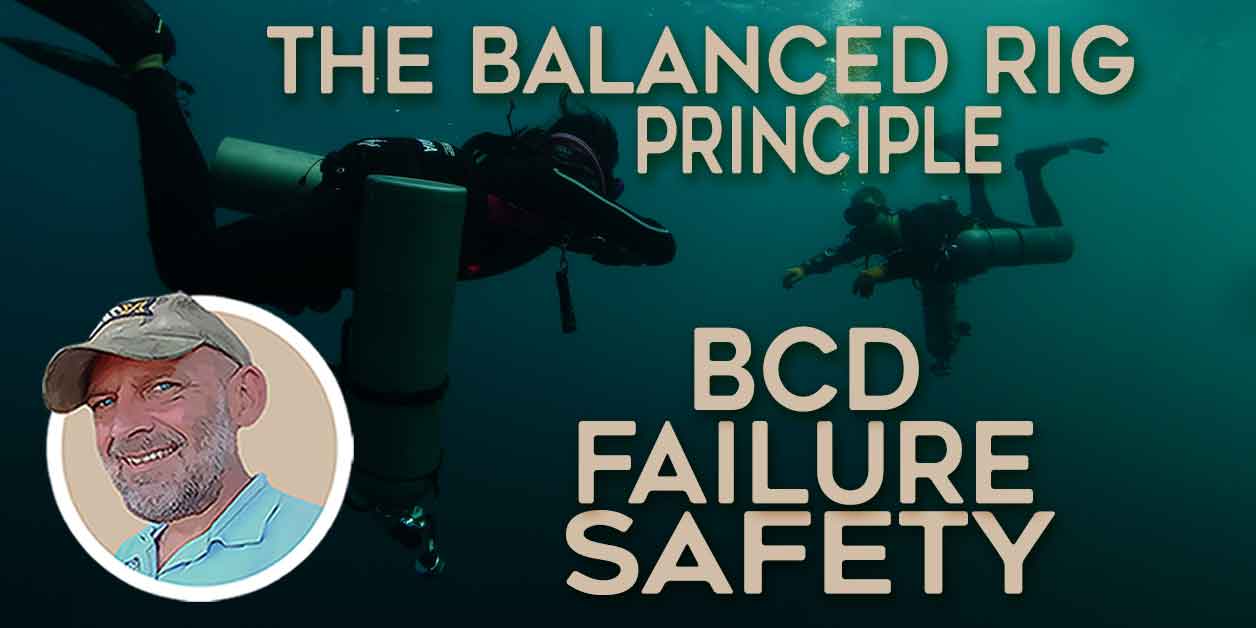Diving Mask Ultimate Buyer’s Guide: Everything You Need To Know!
A diving mask is typically amongst the first pieces of dive gear that a scuba diver purchases. Getting the best diving mask is critical for the enjoyment and safety of your dive. However, masks are available with a bewildering myriad of designs and features. Ensuring that a diving mask fits properly can also be a confusing task.
This comprehensive diving mask buyer’s guide aims to help you narrow down your options and make the right purchase that you will not regret.
How to choose a diving mask
Before entering a dive shop, take a moment to align your mask choice with your diving preferences. Whether it’s a wide field of vision, low volume, frameless design, or a color that complements your dive gear, understanding your priorities is crucial for a satisfying choice.
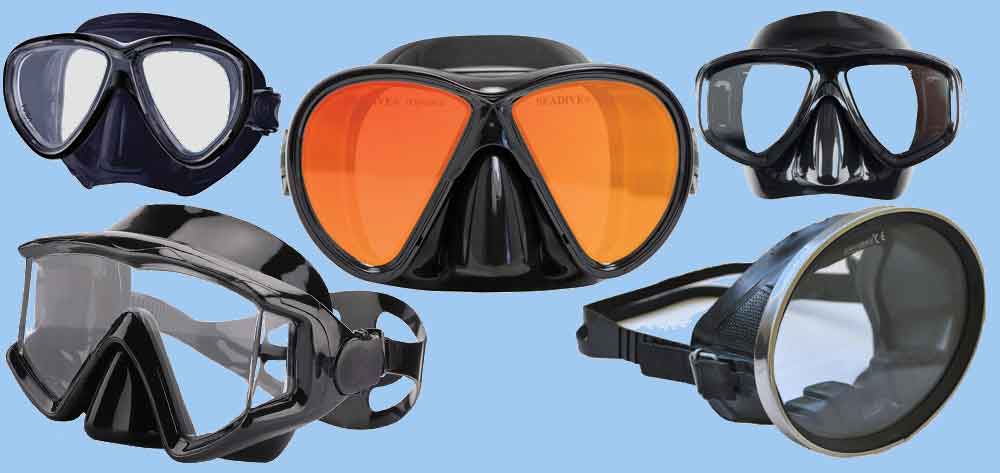
Dive masks offer various features suitable for different diving activities. Low-volume masks with a frameless design are favored by technical, cave, and apnea divers. On the other hand, underwater videographers and photographers may opt for masks with a larger lens area or multiple lenses. Knowing your intended use streamlines the decision-making process.
Snorkel/Swim Googles: Not Suitable for Scuba Diving
When it comes to scuba diving, not all masks are created equal. There are specific requirements for a mask to be suitable for scuba diving.
Firstly, to facilitate air pressure equalization during descent, a scuba diving mask must incorporate a silicone skirt that encloses the nose.
Additionally, it must boast strong tempered glass capable of withstanding diving pressures.
This information ensures that your diving mask choice aligns with your specific preferences and the demands of your chosen diving activities, ensuring a seamless and safe underwater experience.
Diving Mask Fit: The Most Important Factor
The paramount consideration in choosing a diving mask is its fit. A well-fitting mask not only prevents water from entering but also ensures a comfortable dive without constant mask clearing.
With diverse face shapes, head sizes, and nose shapes, masks are designed to accommodate these variations. It’s crucial to find a mask that becomes your ally, not your adversary, once submerged.
How to Test Diving Mask Fit When Shopping for Dive Gear
To determine if a mask fits, follow these steps while shopping for your dive gear:
- Hold the mask gently against your face without attaching the strap behind your head. Ensure that no hair is underneath the mask skirt.
- Breathe in through the nose, hold your breath, let go of the mask, and perform movements like looking down, looking up, smiling, moving your jaw, and shaking your head.
- A well-fitting mask should stay in place because it will be held against your face by reduced air pressure inside the mask. If there is a problem with the mask seal, the pressure will equalize and the mask won’t stay on your face. This means the mask may be prone to leaking when you dive.
- Try the mask again, this time attaching the straps to check for comfort or tightness on the face. Do not over-tighten the straps, as this can distort the mask skirt and cause leaks.
- Pay attention to any discomfort from the mask pressing on your face; especially the nose, brow, and bridge of the nose. A well-fitting mask should not cause any facial discomfort.
- If possible, wear the mask for a few minutes to ensure continued comfort.
Top Tip: Avoid over-tightening the straps. Water pressure will naturally hold the mask against your face once sealed. Excessively tight mask straps lead to discomfort and leaks during your dive.
These simple tests ensure that your diving mask mask fits snugly, providing a watertight seal and maximum comfort underwater. Remember, a well-fitting mask is your key to an enjoyable and hassle-free diving experience.
Diving Mask Cost
The cost of a diving mask mask can vary based on factors like brand, features, and materials.
- On average, you can find decent-quality dive masks in the range of $50 to $150.
- High-end masks with advanced features may go beyond that range.
- Popular brands like Scubapro, Mares, Cressi, and Aqualung offer a range of options.
It’s essential to prioritize a good fit and comfort since these factors significantly impact your diving experience. While it’s crucial to avoid purchasing a low-quality snorkel mask from a supermarket for diving purposes, the primary consideration in selecting a mask should not solely be its price tag.
High versus Low Volume Diving Masks
Mask volume, referring to the airspace inside the mask, plays a crucial role in your diving experience. Here’s a breakdown of high and low-volume masks:
High-Volume Diving Masks
High-volume masks can provide a sense of openness and expanded peripheral vision. This can be beneficial for divers who feel claustrophobic when they wear a mask.
- Some divers find high-volume masks more comfortable and easier to achieve a seal with.
- Clearing high-volume masks of water requires more effort.
- High-volume masks used to dominate the market but are less common in today’s diving scene.
Low-Volume Diving Masks: The Popular Modern Choice
In contrast, low-volume or low-profile masks sit closer to your face. Their significant advantage lies in easy water clearance—essential for any diver.
- Facilitates easy equalization.
- Provides a wider field of vision.
- Popular with technical, cave, and wreck divers.
When choosing between high and low volume, consider your comfort, ease of water clearance, and the desire for a broader field of vision. Modern diving trends lean toward the practicality and advantages offered by low-volume masks.
Key Diving Mask Features
The Nose Pocket
When selecting a diving mask, the nose pocket, or nose enclosure, plays a pivotal role in ensuring a comfortable fit. A flexible nose pocket is essential for easy equalization, allowing you to pinch your nose effortlessly.
The shape of the nose pocket is equally crucial, preventing water from seeping into the mask under your nose. This feature holds particular significance for novice divers who might find any water ingress around the nose discomforting.
It’s highly recommended to try out various masks to identify the one that fits you perfectly.
Framed and Frameless Diving Masks
Diving masks come in two primary designs: framed and frameless.
Framed Diving Masks
The majority of masks use a rigid frame, chosen for its sturdiness and secure seal. The solidity of framed masks ensures a reliable seal, and they are generally more durable.
Frameless Diving Masks
On the other hand, frameless masks employ a semi-rigid silicone edge bonded to the lens and skirt. This design results in an exceptionally low-volume mask that is foldable, making it a practical choice for a backup mask.
However, frameless masks lack the ability to be disassembled for cleaning, making framed masks the preferred choice for longevity.
Freediving or spearfishing enthusiasts often opt for frameless masks due to their low volume, catering to their specific needs.
Diving Mask Skirt
The mask skirt is a critical component of the mask responsible for creating a watertight seal with the diver’s face. Modern mask skirts are typically made from hypoallergenic silicone and available in a variety of colors. Some manufacturers offer premium silicone materials, which are alleged to increase mask comfort and the consistency of the mask seal.
Mask Skirt Color
The color of your mask skirt has implications for your underwater experience. The decision between opaque and black mask skirts depends on personal preference, with clear options offering a more open feeling and opaque ones reducing glare and distractions.
- Opaque skirts allow more light into the mask, making them suitable for newer divers to alleviate feelings of claustrophobia.
- Black skirts, favored by technical divers and underwater photographers, reduce unnecessary light and glare.
Your preference for skirt color may evolve with experience, so it’s advisable to explore different options to find what works best for you.
Diving Mask Straps
The choice of mask straps is another consideration when selecting a diving mask. Mask straps are available in silicone, rubber, or velcro-neoprene.
Whilst most diving maskmasks are sold with economical silicone or rubber straps, velcro-neoprene straps can be a very worthwhile option to consider.
Velcro-Neoprene Mask Straps
Velcro-neoprene mask straps are regarded as the most reliable, offering resistance against spontaneous failures compared to silicone or rubber alternatives.
- Velcro-neoprene straps are especially advantageous for divers with long hair, reducing the chances of tangling.
- Warm-water divers, particularly those without hoods, favor velcro-neoprene straps for their minimal risk of hair entanglement.
- Cold-water divers often opt for rubber or silicone straps due to their slip-resistant nature and ease of adjustment, especially when wearing thick diving gloves.
If your mask only comes with a silicone or rubber strap, you can upgrade to a velcro-neoprene strap later.
Neoprene Diving Mask Strap Covers
Some divers add neoprene pads to the rear section of their silicone or rubber mask straps to address hair-related issues. While these pads reduce hair-related problems, they do not eliminate the inherent risk of spontaneous breakage associated with silicone or rubber mask straps.
Diving Mask Strap Buckles
Mask strap buckles are essential components to secure the dive mask to your head.
- Basic masks come with simple pin-buckles offering basic adjustability.
- More expensive masks feature swivels that allow for some vertical movement, enhancing overall comfort.
The primary quality to look for in a mask strap buckle is ruggedness, as buckles and swivels are prone to being the first points of failure on a mask.
Diving Mask Purges
Although not strictly necessary and generally unpopular among divers, built-in purges can be a solution for those struggling with leaks or difficulty clearing their masks through traditional methods.
A mask purge valve is a one-way valve integrated into the nose, simplifying the process of clearing your mask of water.
- Makes mask clearing slightly more convenient.
- Purge valves can fail, causing unresolvable mask flooding.
- Mask purges add bulk to the nose section of the mask.
I personally consider mask purge valves as ‘equipment fixes to skill problems‘. This is a cognitive bias where the diver seeks to alleviate the effort of developing a critical diving skill; compromising their long-term proficiency development in return for short-term ease and convenience.
It’s always advisable to invest time and effort in practicing mask removal and clearance techniques rather than the instant gratification of a purge valve. This approach contributes to a diver’s overall development and competency.
Diving Mask Lenses
Diving mask lenses play a pivotal role in determining the quality of your underwater vision. These essential features come in various materials and qualities, offering divers many options to suit their preferences.
The lenses come in different designs, including single and multiple lenses. For those with vision impairments, corrective lenses are available to enhance the diving experience. Additionally, divers can opt for color-tinted or mirrored lenses, providing versatility and catering to specific environmental conditions.
Tempered Lenses
The primary safety factor to prioritize in dive mask shopping is a tempered glass lens. This material is chosen for its durability and resistance to shattering.
- Tempered glass undergoes special heat treatment to enhance its strength, crucial for underwater conditions.
- If the mask lens does break, it will fracture into small pieces, not dangerous jagged shards.
- The presence of tempered glass ensures your mask resists scratches and remains intact, even under increased water pressure at greater depths.
The choice of tempered glass in your dive mask is akin to the reinforced safety glass in a car’s windshield, providing protection from potential hazards.
Diving Mask Lens Optical Quality
Some masks offer high optical quality glass, anti-fog, and anti-reflective coatings (ARC), albeit at a higher cost. These features improve light transmission, reduce glare, and enhance underwater visibility.
Investing in a mask with these qualities provides a clearer and distortion-free view underwater. When shopping for your dive mask, be aware that any visual impairments observed in the dive shop may magnify once you’re submerged.
Diving Mask Lens Designs
There are a number of features and options to consider about the diving mask mask lens. Divers will have varying preferences on which lens designs and optional features they value.
Single vs. Dual Lens Diving Masks
Single lens masks, lacking a nose bridge, provide an uninterrupted field of vision, creating a feeling of openness. This design is favored by those with smaller faces or those seeking increased peripheral vision.
On the other hand, dual lens masks resemble spectacles, featuring two separate lenses. While often lower in volume, they allow for interchangeable corrective lenses if your vision isn’t 20:20.
Choosing Between Single and Multiple Lenses
Deciding between single and multiple lens masks ultimately boils down to personal preference. Trying on varied options can help you determine which you find more comfortable and appealing. diving mask masks are available with one, two, or multiple lenses, in framed and frameless designs.
- Single-Lens Masks: Offer a wide, uninterrupted view, maintaining binocular vision for enhanced depth perception.
- Dual-Lens Masks: Often have tear-shaped lenses, providing a wide view across and down for perfect gauge visibility. Customizable with prescription lenses.
- Multiple-Lens Masks: Feature additional lenses around the sides, offering ample light entry and the best view. Ideal for anxious divers.
Top Tip: If you desire a wide view and easy equalizing, opt for a single-lens mask. For travel, or when choosing a spare mask, consider a frameless mask—they are low volume, easy to clear, and often fold flat for convenient packing.
Diving Mask Lens Field-of-View
The lens design significantly influences the mask’s field of view:
- Single-lens masks tend to offer a better field of view than double-lens masks.
- Multiple-lens masks with additional lenses on the sides open up your peripheral vision for a more panoramic view.
- Raked or Inverted Teardrop-style lenses increase downward vision, helpful when operating your dive gear.
When selecting a scuba diving mask, understand that the number and shape of lenses are preferential, and trying the mask on helps determine the best fit for your preferred field of view.
Color-Tinted Lens Diving Masks
Some diving masks are offered with color-tinted lenses. The aim of tinted lenses is to restore colors lost through light absorption as depth increases. These are usually either red, yellow or magenta colored:
- Red lenses: Best for clear, blue water, conditions, such as in the tropics. They are most effective below 10m in depth, where red colors are otherwise lost.
- Magenta lenses: Best for more turbid, green water, conditions, such as in cold water diving locations.
- Yellow lenses: Best for diving areas with low-light conditions, including freshwater lakes and rivers.
Pros:
- Enhanced Visibility: Color-tinted lenses, particularly those designed for color correction, can enhance visibility underwater by improving color contrast and clarity.
- Restoring Normal Colors: Color-tinted mask lenses can help restore colors lost through light absorption at depth.
- Reduced Glare: Color-tinted lenses can help reduce glare from the sun or bright light, providing a more comfortable diving experience.
Cons:
- Reduced Light Transmission: Adding a color filter may slightly reduce the overall amount of light entering the eye, potentially impacting visibility in low-light conditions.
- Limited Applicability: Color-tinted lenses might be more beneficial in certain conditions or for specific purposes, and their advantages may not be universally applicable to all diving situations.
Mirror Lens Diving Masks
Mirrored diving mask lenses, reminiscent of normal mirrored sunglasses, shield your eyes from glare and intense light. This feature is particularly advantageous for those sensitive to sunlight.
Pros:
- Reduced Glare: Mirror lenses can reduce glare from the sun, enhancing visibility underwater.
- UV Protection: They provide additional protection against harmful UV rays, safeguarding your eyes during prolonged dives.
- Privacy: Mirror masks offer a level of privacy, as they make it challenging for others to see your eyes.
- Aesthetics: Many divers appreciate the sleek and stylish appearance of mirror lenses, adding a touch of personal flair to their gear.
Cons:
- Limited Low-Light Visibility: In low-light conditions, mirror lenses may hinder visibility compared to clear lenses.
- Scratch Visibility: Scratches on mirror lenses can be more noticeable than on clear ones, potentially affecting the overall aesthetics.
- Cost: Mirror lens masks may be pricier than their clear counterparts, impacting budget-conscious divers.
Vision Corrective Mask Lenses and Inserts
If you rely on glasses or contact lenses on land, ensuring clear vision underwater is crucial. Diving masks with corrective vision lenses offer tailored solutions, and here’s what you need to know.
Scuba divers with visual impairments have several options, each with its own pros and cons depending on the type of diving, frequency, and level of correction required.
Bonded Prescription Mask Lenses
The best long-term solution involves custom-made lenses, crafted by an ophthalmic specialist and bonded to the original diving mask lens. This option addresses a combination of distance, astigmatism, and reading impairments. While more expensive, it’s favored by many divers for its accuracy, reliability, and convenience.
- Pros:
- Closest to perfect underwater visual acuity.
- Long-term solution.
- Caters to specific vision needs, correcting myopia, hyperopia, and astigmatism.
- Suitable for divers with mild astigmatism and no other major vision issues.
- Cons:
- Expensive to purchase and replace.
- Once made, not easily adjustable, potentially requiring a new mask for significant vision changes.
Stick-on Corrective Mask Lenses
Stick-on lenses are a more affordable solution for long-sighted divers who experience reading difficulties. They are placed in the lower half of masks, effectively creating a bifocal effect. While an effective solution for many divers, there is a risk of stick-on lenses detaching from the mask during dives.
Pros:
- Customization: Stick-on lenses offer a tailored solution for divers with specific vision needs, potentially enhancing underwater visibility.
- Affordability: Compared to prescription masks, stick-on lenses can be a more budget-friendly option for correcting vision underwater.
- Compatibility: They can be applied to various mask types, providing flexibility for divers with different preferences.
Cons:
- Adhesion Issues: Some users report challenges in maintaining consistent adhesion, impacting long-term reliability.
- Limited Correction: Stick-on lenses might not address complex vision issues as effectively as prescription diving masks.
- Potential Distortion: Depending on the application, there’s a risk of optical distortion, affecting clarity underwater.
Using Contact Lenses For Diving
Many divers opt for contact lenses with a regular mask. Initially inexpensive, this solution caters to a range of prescriptions. However, divers need to be cautious about potential mid-dive loss and eye care in the marine environment.
Hard contact lenses are impermeable, which can result in blurred vision and discomfort when scuba diving. Users frequently report dryness in their eyes when utilizing hard contacts.
In contrast, soft contact lenses retain moisture and are usually larger in size; reducing the likelihood of them coming out during the dive. Scuba diving with soft contacts is typically problem-free and rarely gives rise to complications.
Pros:
- Clear Vision: Contact lenses provide a clear and unobstructed field of vision underwater.
- Compatibility: Soft contact lenses are generally suitable for diving due to their flexibility and comfort.
- Prescription Options: Scuba divers with vision issues can use prescription contact lenses for a tailored solution.
- Gas Permeable: Soft lenses allow air to pass through the lens making them comfortable when diving.
Cons:
- Risks of Loss: There’s a risk of losing contact lenses during dives, especially if the mask floods, or is removed.
- Eye Irritation: Exposure to salt water, chemicals in the water, or other contaminants can cause irritation for contact lens wearers. Proper eye hygiene is crucial to mitigate this risk.
- Lens Handling: Putting on and removing contacts requires clean hands, which might be challenging during diving boat trips. Proper hygiene practices become essential.
- Potential for Infection: Underwater environments can harbor bacteria, increasing the risk of eye infections for contact lens users. Rigorous cleaning and disinfection routines are imperative.
As a short-sighted diver myself, I have used contact lenses for all of my dives over 30 years. I choose ‘daily disposable’ lenses to reduce the risk of infections. Spare lenses are always in my save-a-dive kit. To prevent dislodging or losing lenses underwater, I close my eyes whenever I remove my mask.
Tips for Specific Diving Mask Issues
Divers with Mustaches and Beards
Beards or mustaches can interfere with the mask seal below the nose. This can cause annoyingly persistent mask leaks. Here are some popular resolutions:
- Buy a mask with a longer skirt area below the nose.
- Apply Shea butter, beeswax, cocoa butter, or similar, onto the mustache area to facilitate a better seal.
- Avoid using Vaseline, and other petroleum jelly products, as they can degrade silicone mask skirts over time.
- Shave the mustache down immediately below the nose to improve mask skirt contact with the skin. 0.5mm (0.2″) is usually sufficient.
Divers with Long Hair
Long hair can easily become a hassle during diving, prone to tangling.
- Neoprene mask straps prove invaluable in preventing tangles, especially for those with longer locks.
- Consider braiding your hair, as it significantly reduces the chances of tangling compared to simple ponytails.
If you’re a regular diver with long hair, wearing a dive hood can keep your hair under control throughout the dive, minimizing interference with the mask strap.
Tips for Care and Maintenance of Your Diving Mask
Prepare a new diving mask to prevent repetitive fogging. Thereafter, use saliva, baby shampoo, or a commercial de-fogging solution before every dive.
After diving, soak the mask in warm freshwater (not over 86°F/30°C) to dissolve salt crystals. Rinse thoroughly and dry before storage. Do not dry the mask under direct sunlight.
As routine maintenance, clean your diving mask regularly and thoroughly to remove salt, sand, facial oils, and suntan lotions. Use warm soapy water and a soft brush or cloth for cleaning. Ensure that no residues are left behind.
Storing Your Diving Mask:
- Location:
- Store your mask in a dry, cool place away from direct sunlight.
- Protective Enclosure:
- Use a hard mask box or a padded mask bag for storage.
- This prevents damage or misshaping caused by objects on top of it.
- Beware of Pests:
- Insects and rodents sometimes ear silicone; store your mask securely.
- Ensure the storage location is inaccessible to pests to avoid damage.
About The Author

Andy Davis is a RAID, PADI TecRec, ANDI, BSAC, and SSI-qualified independent technical diving instructor who specializes in teaching sidemount, trimix, and advanced wreck diving courses.
Currently residing in Subic Bay, Philippines; he has amassed more than 10,000 open-circuit and CCR dives over three decades of challenging diving across the globe.
Andy has published numerous diving magazine articles and designed advanced certification courses for several dive training agencies, He regularly tests and reviews new dive gear for scuba equipment manufacturers. Andy is currently writing a series of advanced diving books and creating a range of tech diving clothing and accessories.
Prior to becoming a professional technical diving educator in 2006, Andy was a commissioned officer in the Royal Air Force and has served in Iraq, Afghanistan, Belize, and Cyprus.
In 2023, Andy was named in the “Who’s Who of Sidemount” list by GUE InDepth Magazine.
Purchase my exclusive diving ebooks!
Dive Mask FAQs
A scuba mask should fit snugly, creating a watertight seal without being too tight or uncomfortable.
A mask purge valve, usually below the nose, is a one-way valve. When exhaling, it expels any water accumulated in the mask.
Leaks may result from an ill-fitting mask, over-tightened mask strap, damage to the mask skirt, displaced lenses, or interference from long hair or a mustache.
The fit of a dive mask is most important. It must create a watertight seal with the face. Otherwise, consider your diving interests, face size, and personal preferences when selecting a mask.
Wash with warm soapy water and a soft brush or cloth. Remove residues, such as salt, sand, grease, sun lotion, and makeup.
A diving mask creates a watertight barrier over your eyes and nose, enabling clear vision and breathing while submerged.
A diving mask covers the eyes and nose, allowing the diver to equalize pressure inside the mask when descending. Swimming goggles cover only the eyes and lack the nose enclosure.
Red, magenta, or yellow-tinted mask lenses enhance underwater vision by restoring natural colors and improving clarity at depth. Additionally, mirrored lenses help reduce glare when at the surface.
Originally posted 2023-10-02 16:54:08.







